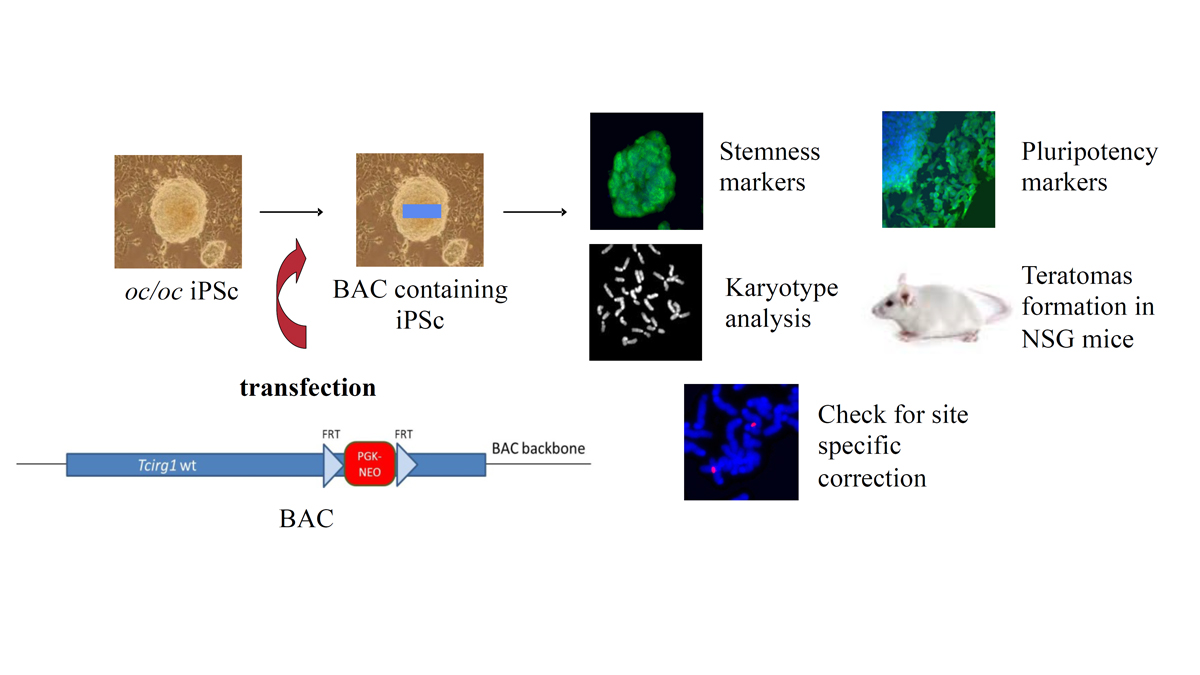Project Description
Induced pluripotent stem cells for disease modelling and regenerative medicine.
Autosomal recessive osteopetrosis is a human bone disease mainly caused by TCIRG1 gene mutations that prevent osteoclasts resorbing activity, recapitulated by the oc/oc mouse model.
Bone marrow transplantation is the only available treatment, limited by the need for a matched donor.
The use of induced pluripotent stem cells (iPSC) as an unlimited source of autologous cells to generate gene corrected osteoclasts might represent a powerful alternative.
We generated iPSC from oc/oc mice, corrected the mutation using a BAC carrying the entire Tcirg1 gene locus as a template for homologous recombination, and induced hematopoietic differentiation. Similarly to physiologic fetal hematopoiesis, iPSC–derived CD41+ cells gradually gave rise to CD45+ cells, which comprised both mature myeloid cells and high proliferative potential colony-forming cells. Finally, we differentiated the gene corrected iPSC-derived myeloid cells into osteoclasts with rescued bone resorbing activity.
These results are promising for a future translation into the human clinical setting. A similar approach is being undertaken for the cure of cardiovascular diseases.

Contacts:
paolo.vezzoni@itb.cnr.it
gianluigi.condorelli@unimi.it
References:
Di Pasquale E. et al. J Vis Exp. 2013
Priori SG. et al. J Clin Invest. 2013
Keywords:
Induced pluripotent stem cells (iPSC), Regenerative medicine, Gene editing

